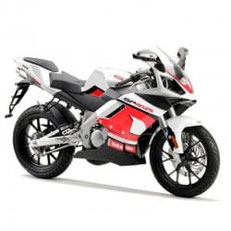
DERBI Motorcycle PDF Manuals
Review of DERBI Senda R125 4T Motorcycle
Above on the page there are several PDF Manuals for DERBI Motorcycles.
The Spanish company Derbi, founded by Simeon Rabas Singla in 1922, was originally a tiny office that repaired and rented bicycles on the outskirts of Barcelona.
Over time, it developed into a small factory, which in 1944 began to produce its own bicycles under the Bicicletus Rabasa brand, and by the beginning of the fifties it had become perhaps the largest bicycle manufacturer in Spain.
At the same time, the first 50 cc mopeds of the brand, with two-stage gearboxes and a candle-type rear suspension, called the Derbi SRS, saw the light of day.
It was then that the Derbi brand appeared, meaning the abbreviation of the Spanish words Derivados de bicicletas (made from a bicycle), and the initials of the creator, founder of the company Rabas Singla, were encrypted in the name SRS.
A little later, in the early fifties, the company released its first 250 cc motorcycle, which did not take root in the post-war devastation.
At the same time, the demand for affordable fifty dollars continued to grow, so in the 60s the company was mainly engaged in them, having achieved considerable success, including even championship titles in the most prestigious races of that time.
By the end of the 60s, Derbi returned to the topic of motorcycles, introducing the world to a 125-cc machine with a V-shaped, and a few years later, with an in-line liquid-cooled engine, which lasted until the early 70s.
At the same time, the company introduced one of the world's first scooters with a CVT:
Derbi Derbimatic was enthusiastically received by buyers!
It was thanks to Derbimatic, as well as the further development of the idea of variator transmission in the Variant apparatus, that the Derbi company withstood the fiercest war with Japanese manufacturers who flooded the market with their much more affordable devices.
A little later, in 1986, the first Derbi scooter saw the light, although it can only be called a scooter with a big stretch - despite the variator, the layout of the car was quite motorcycle.
In the 90s, Derbi showed a number of new products, which included already traditional scooters with engine crankcases that act as a rear suspension arm, as well as a dozen other small-capacity vehicles.
But, perhaps, the loudest novelty was the Derbi Predator, which appeared in 1998, and featured a stunning design, and most importantly - the most sophisticated rear suspension with progressive response and a rear shock absorber located horizontally under the tail.
At the same time, agreements were signed with Cagiva, under whose Derbi brand was sold in Italy, and Husqvarna, as well as the revived Bultaco brand, under which Derbi released a 50-cc motorcycle.
The company was successfully developing and by the beginning of the 2000s it was counting on 10% of the European market for small-capacity vehicles, but already in 2001 the owner of Derbi sold the company to the Italian giant Piaggio, changing 100% of his shares for 5% of Piaggio's shares.
It was under her wing that the Derbi GP1 was developed, a stunning scooter with a full-fledged motorcycle chassis - an aluminum diagonal frame, a swingarm and a chain drive.


